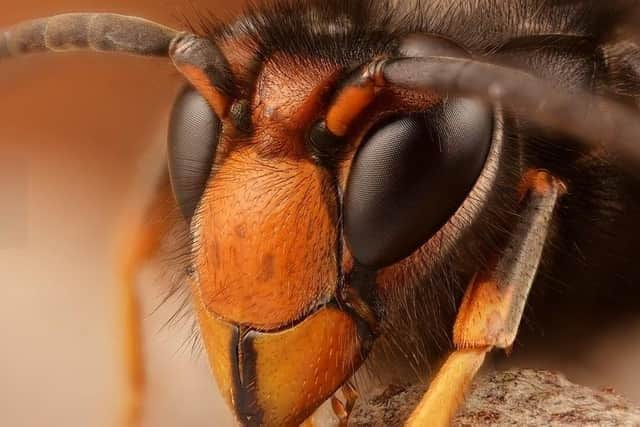Asian hornet spotted in the Newhaven area
and live on Freeview channel 276
As well as having a very painful sting, the Asian hornet can eat up to 50 honey bees a day after decapitating them and pulling off their wings. Should they become established here, the Asian hornet would pose an enormous threat to honey bees that are already struggling due to loss of habitat and the impact of pesticides.
Hornet stings are more painful to humans than typical wasp stings because of the chemicals found in hornet venom. Individual hornets can sting repeatedly, unlike honey bees. Its sting has been described as a feeling similar to being stabbed by a red-hot needle. It can cause severe swelling and ache for a few days.
Advertisement
Hide AdAdvertisement
Hide AdA message from Brighton and Lewes Beekeepers says: “A member of the public spoke to me this afternoon and sent me photos and a video of an insect at her home that I would identify with 95% certainty as an Asian hornet (vespa velutina). The invader was spotted in Newhaven, so one could presume it travelled over on the ferry, the entry method of many others this year judging by their distribution.


“Now is the time to alert family and friends to watch for them. Experience on Jersey, where they are close to becoming endemic, shows that the eyes of the public are our best defence, as today’s phone call from an alert member of the public demonstrates. If we don’t nip this in the bud now, we’ll never get rid of them.”
According to Lewes District Council: “This invasive non-native species is a highly aggressive predator, and any suspected sightings should be reported immediately.”
Members of the public can report sightings by email to [email protected] with a photo if possible, or by using the ‘Asian Hornet Watch’ app.
Advertisement
Hide AdAdvertisement
Hide AdFurther information and links to download the app for both iPhone and Android devices can be found at www.gov.uk/government/news/new-app-to-report-asian-hornet-sightings
The Asian hornet arrived in France in 2004, hitching a ride on flower pots exported from China, and spread rapidly.
The large insects are identifiable for the yellow ‘socks’ on their legs, bright orange face and black thorax. They active mainly between April and November.